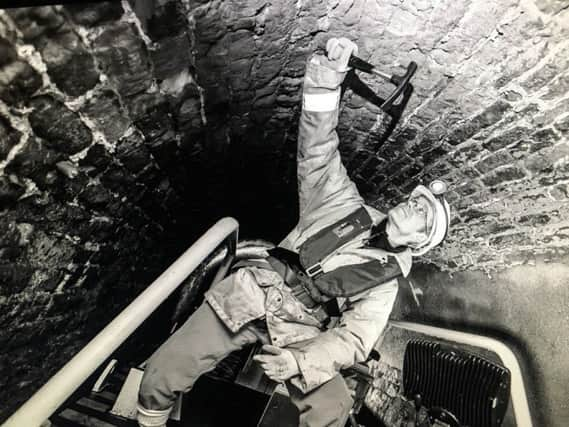Legging it across the Pennines: Engineers descend on Standedge Tunnel


Experts from the e Canal and River Trust will spend three days underground inching their way through the dark to carry out the inspection.
High-powered lighting will be bought in to illuminate the tunnel roof so that any cracks or deterioration can be identified and repair works planned.
Advertisement
Hide AdAdvertisement
Hide AdStandedge Tunnel took 17 years to dig and was finally completed in 1811. It cost 50 lives and more than £123,000 – the equivalent of £8.8m today.
Having fallen into decline after to competition from the railways, the last commercial boat passed through the tunnel on 13th October 1916, before an ambitious restoration, dubbed the ‘impossible restoration’, saw it reopen in 2001.
With no towpath, the horse drawn canal boats originally had to be unhitched and ‘legged’ the length of the tunnel. This required men to lie on their backs on top of the boat and ‘walk’ along the tunnel roof, moving the boat along with them. Legging was a challenging and often dangerous job and professional ‘leggers’ were employed to propel laden freight barges through the tunnel. In its heyday the tunnel operated 24 hours a day and ‘legging’ took about 3 hours. Today the tunnel is popular with boaters coming from across the world to make the epic journey across the Pennines from Yorkshire to Lancashire.
Chris Reynard, principal surveyor at the Canal and River Trust, said: “Standedge Tunnel is an amazing engineering achievement, especially considering it was dug by hand 200 years ago by navvies armed only with picks, shovels and dynamite.
Advertisement
Hide AdAdvertisement
Hide Ad“It’s strange to think that almost exactly 100 years ago the tunnel was shut down to commercial boats and its restoration described as “impossible”. Fifteen years after it was reopened it is more popular than ever with boaters and tourists, which is why it’s vital that we carry out this annual check-up.”